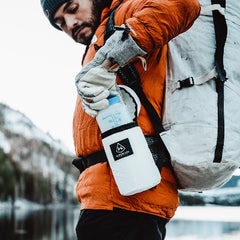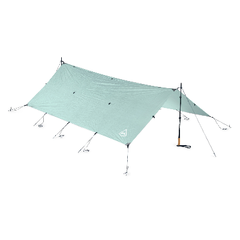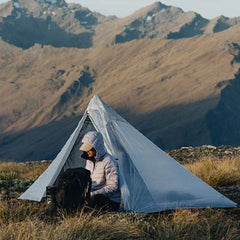Imagine a desolate desert of snow and ice as far as you can see, devoid of all vegetation and with only a few living creatures–penguins, seals and seabirds. Antarctica still seems a vast white landscape untouched by humans. But while Antarctica may seem like some unreachable and unfathomable place, adventuring in the continent is becoming increasingly popular. More than 37,000 tourists visited Antarctica in 2009. Most people hire experienced guides. However, non-guided adventures and experiences are still possible, but extreme precautions need to be taken. We talked to Seth Timpano, a Hyperlite Mountain Gear Ambassador as well as an Antarctic Logistics & Expeditions Travel Safety Manager, to learn about how to prepare for an Antarctic adventure.
What are different sorts of things that people have to think about when they’re organizing expeditions to Antarctica compared to trips they might organize to Alaska or Pakistan?
Antarctica is the most remote continent on the planet and the costs are high and logistics of simply getting to Antarctica complicated. Thorough planning for an expedition to Antarctica is a must, and the most successful expeditions are the ones with the best planning and logistics.

How does one do a self-sufficient trip in Antarctica? Are there hostels/camps/places where people can stay?
A self-sufficient, or unsupported trip to Antarctica requires lots of planning in addition to a large budget. There are a few non-government organizations that provide transport to the interior of the continent, such as Antarctica Logistics and Expeditions. Most of the logistics come in the form of air transportation to Antarctica and then ski-equipped aircraft travel within the continent itself. There are a few staffed logistical camps in Antarctica, but once outside of these, you’ll be in one of the most remote and barren places on Earth.
Do people have to bring all their own food? If so, what’s the typical menu?
Generally people doing unsupported expeditions (climbs, ski, kite) bring their own food for their time in the field, and eat catered meals in the logistical camps while they wait for their adventure to begin. Regardless of the endeavor, they need to bring lots of calories for the physical strain and extreme cold. A typical day would require between 4000-5000 calories. A good balance of carbs, protein and fat is needed. Fatty foods are key for staying warm.
There must be some consideration of going light?
Yes there is. Food and fuel is the most important thing to get right on the long trips because that will be most of the weight. On the short trips light gear makes more of a difference.
What about fuel and other supplies?
Some people go fully self-sufficient and unsupported and carry all their food and fuel with them. Others often get one to three resupplies, usually depots/caches left for them along the way.
Can you buy fuel in Antarctica? Fuel is provided as part of your logistical costs.

How is it transported to Antarctica? We fly the fuel in. I have flown to Antarctica several times surrounded by 100 – 55gal drums of Jet Fuel! It’s how we fuel the ski-equipped aircraft in Antarctica.
Are the logistics incredibly complicated?
Yes. The Macro logistics are incredible complicated and near impossible to do without using an operator such as ALE. The combined knowledge and experience allow for people to get to Antarctica and to the start of their expedition. But in a way that is good for people because it lets them focus on their expedition logistics and execution. The Micro logistics of their trip are also very important. Slight miscalculations in food or in fuel can lead to a failed expedition. There are also many logistical issues with navigation, communication and power.
Do you pretty much have to be prepared for any kind of weather?
Yes. Although it is usually cold, there are different varieties of cold. It’s very cold when the wind blows. But when the wind doesn’t blow and the sun is shining it can be surprisingly pleasant. Sometimes the light can be flat, which makes navigation tedious.
Is it kind of like climbing at high altitudes?
Climbing Mount Vinson, the highest peak in Antarctica, is interesting because it is high altitude and extremely cold. Temps as low as -40F with wind chills far below that are not uncommon.
What are similarities? Much of the Polar Plateau is 3000-4000 meters. Most people don’t realize that and often people get altitude sickness their first couple days when they fly close to the South Pole. So there are many similarities.
Differences? The biggest difference is that it isn’t really that high and so you can breathe easy and you don’t feel as bad. Furthermore, the terrain changes more slowly which allows lots of time to properly acclimatize.

Shop at HyperliteMountainGear.com.
The post How To Lightweight Adventure in Antarctica appeared first on Hyperlite Mountain Gear Blog.


















